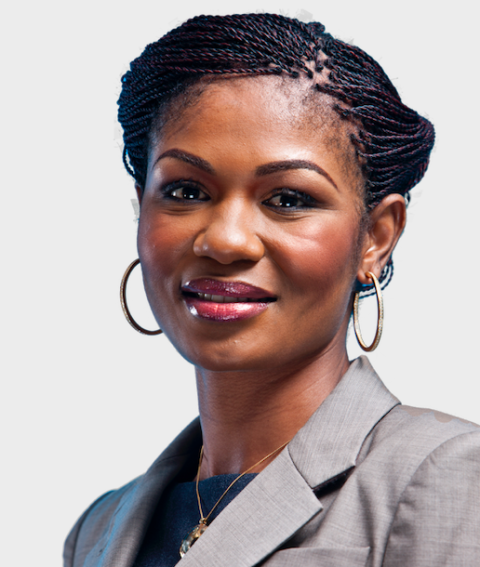Financial Mail Women
The Road To Gender Equality Remains Rocky
The inaugural launch of The State of Gender on JSE-Listed Boardsreport shows that, collectively, women have yet to break through the barriers imposed by gender bias.
Of the 267 JSE-listed companies evaluated from their 2017 Integrated Annual reports, only 10 achieved gender parity — that is, 50 per cent female board representation — at the time of the report, with another seven close to achieving parity with the appointment of just one more woman to the board.
But looking at it from a glass-half-full perspective, specialist gender mainstreaming group Business Engage’s company secretary, Malcolm Larsen, says this presents “opportunities” for 84 women to join the boards of 62 of these JSE-listed companies.
“In most companies — 94% in all — there is space for one or two women to join a board. Investment holding company Stellar Capital says it plans to go from 10 males and no female board members to gender parity, giving an opportunity for five women to join that board over the long-term.”
Larsen says 32 of the companies analysed still have no women on their board while 50 companies chose not to report

on gender at board level to their shareholders. “This is despite amendments to JSE listing requirements to include a policy of promotion of gender diversity at board level in these publications. A number of other companies noted the requirement and advised that they are looking at it,” he says.
Zeona Jacobs, the director of Marketing and Corporate Affairs for the JSE, also focuses on the possibilities: “While women remain significantly under-represented at board level, the JSE listing requirements appear to have been a contributor to motivating companies to be introspective regarding their gender diversity at this level.”
These developments are something Larsen calls a “quevolution. It’s no revolution, but we’re expecting a quick evolution”.
Larsen says the report, released late last year and compiled by the 30% Club Southern Africa chapter of which Business Engage is the custodian, in association with the Institute of Directors Southern Africa, WDB Investment Holdings, management consulting firm Korn Ferry and Brand SA, was based on publicly available information in the form of Integrated Annual Reports for the period 1 January 2017 to 31 December 2017.
He says it was a response to often-asked questions, such as “What are the opportunities for women on boards in South Africa?” “Why are there not more women on the boards of listed companies?” and “Are there enough women of the right calibre to fill board positions as they arise?”
No Room For Tradition And Other Bias
There are many reasons why there is limited board representation by women, he says. “It may be unconscious bias on the part of those hiring, or more consciously, an extension of the old boys’ club.” There’s also the double bind women face such as the responsibility of balancing work and family. There’s no doubt that the “old way of working” still has a major influence on attitudes. Engineers, mostly men at the time, built the original great American companies. It was infrastructure — skyscrapers, railroads, oil pipelines — and those engineers and project managers moved into management. Nothing much has changed.
“Even modern companies such as Google, Facebook and Amazon have ultra-modern processes and Victorian attitudes,” says Larsen.
He says while the “Golden Skirt Syndrome” — where the same, usually politically well-connected, women are appointed to multiple boards at the expense of other women — is a global phenomenon, it’s a self-defeating exercise. “Directors who sit on multiple boards run the risk of becoming too thinly stretched. Despite their considerable expertise, they may struggle to give sufficient attention to their respective board responsibilities. Executive search companies have a responsibility to expand their search for available female talent in South Africa.” He attributes this to human nature. “All things being equal, would you want Jane Soap on your board or Bridgette Radebe? Of course, the board is concerned about themselves, their future and the company. Societal needs are usually low on most boards’ criteria.”
Larsen says if anything stood out for him after analysing the report, it was that very few companies tie in their race diversity in terms of B-bBEE with their gender diversity. “This surprised us. We thought many more companies would see an advantage in merging their race and gender policies.”
On why gender representation is important, he says it’s about “societal balance. The days of men being the sole breadwinners are way gone — the family framework can’t support that today. And what other resource other than labour does society use only half of and think it a good idea?”
It also makes a difference to a company’s bottom line. After a 2016 study, US think-tank Peterson Institute for International Economics concluded that gender diversity boosts profitability. (But other studies show it usually takes more than one woman on the board to make a difference).
“Gender diversity takes away from group think and encourages more debate that leads to better, thought-out decisions with fresh insights. It also affects company culture positively with women generally more collaborative. The argument that the issues are complex and females do not have the required experience is generally nonsense,” says Larsen.
Women Must Seize The Opportunities
“Right now,” says Larsen, “everybody accepts that business is not ‘business as usual’. This creates a great opportunity for women, but they also have to take that opportunity. It’s not going to be given to them on a plate — far from it.” He says many men feel threatened by the push for more women at senior positions in the workplace, so it is as important for men to be as much part of the conversation as women.
The report, says Larsen, is the first of its kind and will be used as a baseline to measure future progress and track companies in relation to commitments made.
The next report, which covers 1 January to 31 December 2018, expected in September 2019, will be more subjective. “We’ll look at why the boards made the decisions they’ve made, what challenges they face and how they’re overcoming them.”
Still, Larsen is clear: the report is not meant to be a “reproachful” document, but a “constructive” one.
He is also cautiously optimistic: Larsen believes a “collective consciousness” will take hold. “While we can probably forget about complete parity in the short-term, we can work on moving the dial a little more each year.”






 Sign-up and receive the Business Media MAGS newsletter OR SA Mining newsletter straight to your inbox.
Sign-up and receive the Business Media MAGS newsletter OR SA Mining newsletter straight to your inbox.